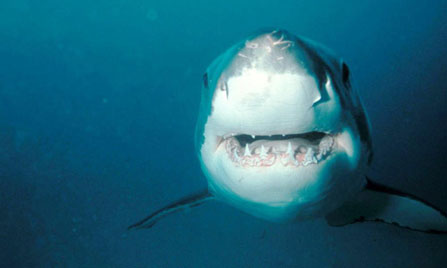World´s largest predatory fish receives protection

Baja Peninsula waters are among the most frequented by the great white shark (Foto: Wildlife Pictures / Jerome Mallefett / WWF-Canon).
PACIFIC COAST
When Ed McGaa accompanied his children on a trip to Guadalupe Island, Baja California, to swim with the great white sharks, his enthusiam for sports and adventure put his nerves to the test.
The 77-year-old Native American tourist and author from South Dakota, U.S.A. wanted to get to know the famed species firsthand. After all, as a war veteran, he had slipped through the clutches of the Grim Reaper more than once.
“Would it be one of these giant sharks that would finally do me in? Perhaps. This could be it!” he recalls thinking. Obviously however, he survived to tell the tale.
What he may not have known at the time was that there would be many more opportunities to observe great white sharks up close, thanks to a new ban instated recently to protect them.
On Jan. 17, 2014, Mexico's version of the Federal Register announced that a permanent ban had been established on the capture of great white sharks (Carcharodon carcharias) in national waters.
“In the agreement establishing the permanent ban on the fishing and capture of great white sharks, it must be stressed that their capture is strictly prohibited…along both of Mexico’s coasts,” declared the Secretariat of Agriculture, Livestock, Rural Development, Fishing and Food (Sagarpa).
It stated that “all great white sharks that are victims of by-catch from commercial fishing operations for other species, independent of the type of fishing fleet, as well as those caught by recreational and sports fishing vessels, must be released.”
The ban is a result of The National Action Plan for the Management and Conservation of Sharks, Rays, and Related Species in Mexico.
Scientific studies carried out by the National Fisheries Institute indicate that the great white shark, despite being the largest predator in the world, requires protection.
It is classified as a “vulnerable” species because of its slow growth rate, longevity, and low reproductive potential due to its small population of individuals that require 14 years to reach sexual maturity.
The measure is a result of Mexico’s cooperation with the United Nations Organization For Food and Agriculture’s international plan for the exploitation and conservation of sharks.
The waters of the Baja California Peninsula are among the most frequented by great white sharks.
